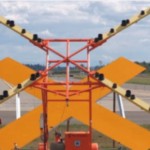
For 16 years pilots have mistaken Seattle-Tacoma International Airport’s most prominent taxiway for a runway, landing on it four times and narrowly avoiding landing on three other occasions.
Most recently an Alaska Airlines (NYSE: ALK) pilot landed a Boeing 737 on the Tango Taxiway on Dec. 19, an incident that probably went unnoticed by passengers, but which has again raised the issue of accidental taxiway landings.
Prior to this year, pilots have landed on Tango Taxiway three other times, in 2000, 2003 and 2004. No one was hurt and no airplanes were damaged in any of these instances.
Taxiways are essentially surface streets for airplanes, which they use to maneuver between the airport terminal and the runways they use for take-offs and landings. While Tango Taxiway is ample for a landing, at 9,400 feet long and 100 feet wide, the danger is that a landing aircraft could collide with another aircraft that’s already on the taxiway.
The most recent landing may raise the issue of somehow marking the taxiway to distinguish it from the nearby runways. While Sea-Tac for years marked the taxiway with a large X, to discourage landing there, that was removed in 2004. Since then the airport has depended on bulletins to flight crews, and the existence of the 2008 third runway to the right, to keep pilots from landing on the taxiway.
Here are the three prior taxiway landings, in chronological order, according to a 2004 safety report from the National Transportation Safety Board. The NSTB has indicated it may investigate the Dec. 19 incident:
• On December 2, 2000, the pilot of a Harbor Air Cessna 208 was the first to land on Tango Taxiway. The Cessna is a small nine-passenger single-propeller aircraft, often called a Cessna Caravan.
• On March 14, 2003, an American Airlines MD-80 landed on the taxiway. The MD-80 is a twin-engine jet carrying about 155 passengers.
• On Jan. 19, 2004, the flight crew of an Air Canada Jazz flight landed their DHC-8 on the taxiway. That twin-engine propellor plane, similar to the Dash 8 aircraft now operated by Horizon Air, carried 32 passengers.
On three other occasions, in December 1999; January 2004; and February 2004, the pilots of three different Boeing 737s almost landed on Tango Taxiway. In each case the pilots realized their mistake in time and either diverted to the nearby airfield or came around again with a corrected approach, according to the NTSB report.
All seven incidents happened during the winter months when the aircraft were coming into Sea-Tac from the north and the sun was low in the sky to the south. All the pilots involved were flying in on visual, which means that the pilot was looking out the windows rather than depending on instruments to land the planes.
In several of the incidents, the angle of the sun made it hard to discern which was the taxiway and which was the runway, despite the fact that the runways are clearly marked.
“The terrain and paved surfaces were wet,” said the NTSB report about the 2003 taxiway landing. “Pilot reports indicated that sunlight reflecting off of the wet paved surfaces created a glare,” which made it hard to see the markings.